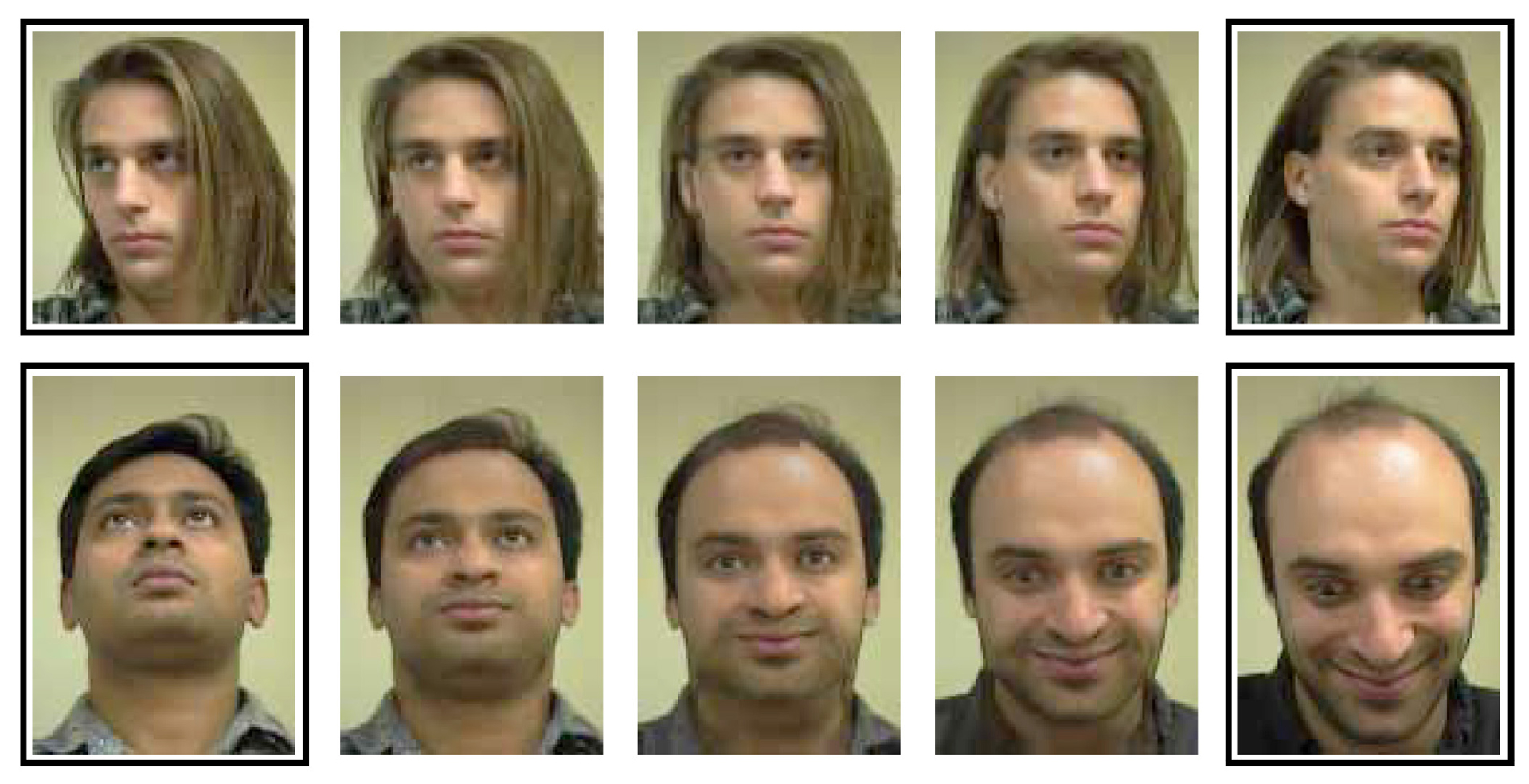“View morphing” by Seitz and Dyer
Conference:
Type(s):
Title:
- View morphing
Presenter(s)/Author(s):
Abstract:
Image morphing techniques can generate compelling 2D transitions between images. However, differences in object pose or viewpoint often cause unnatural distortions in image morphs that are difficult to correct manually. Using basic principles of projective geometry, this paper introduces a simple extension to image morphing that correctly handles 3D projective camera and scene transformations. The technique, called view morphing, works by prewarping two images prior to computing a morph and then postwarping the interpolated images. Because no knowledge of 3D shape is required, the technique may be applied to photographs and drawings, as well as rendered scenes. The ability to synthesize changes both in viewpoint and image structure affords a wide variety of interesting 3D effects via simple image transformations.
References:
1. BEIER, T., AND NEELY, S. Feature-based image metamorphosis. Proc. SIGGRAPH 92. In Computer Graphics (1992), pp. 35-42.
2. CHEN, S.E. Quicktime VR An image-based approach to virtual environment navigation. Proc. SIGGRAPH 95. In Computer Graphics (1995), pp. 29-38.
3. CHEN, S. E., AND WILLIAMS, L. View interpolation for image synthesis. Proc. SIGGRAPH 93. In Computer Graphics (1993), pp. 279-288.
4. FAUGERAS, O. Three-Dimensional Computer Vision, A Geometric Viewpoint. MIT Press, Cambridge, MA, 1993.
5. HARTLEY, R. I. In defence of the 8-point algorithm. In Proc. Fifth Intl. Conference on Computer Vision (1995), pp. 1064- 1070.
6. KUMAR, R., ANANDAN, P., IRANI, M., BERGEN, J., AND HANNA, K. Representation of scenes from collections of images. In Proc. IEEE Workshop on Representations of Visual Scenes (1995), pp. 10-17.
7. LAVEAU, S., AND FAUGERAS, O. 3-D scene representation as a collection of images. In Proc. International Conference on Pattern Recognition (1994), pp. 689-691.
8. LEE, S.-Y., CHWA, K.-Y., SHIN, S. Y., AND WOLBERG, G. Image metamorphosis using snakes and free-form deformations. Proc. SIGGRAPH 92. In Computer Graphics (1992), pp. 439-448.
9. LUONG, Q.-T., AND FAUGERAS, O. The fundamental matrix: Theory, algorithms, and stability analysis. Intl. Journal of Computer Vision 17, 1 (1996), 43-75.
10. MCMILLAN, L., AND BISHOP, G. Plenoptic modeling. Proc. SIGGRAPH 95. In Computer Graphics (1995), pp. 39-46.
11. POGGIO, T., AND BEYMER, D. Learning networks for face analysis and synthesis. In Proc. Intl. Workshop on Automatic Face- and Gesture-Recognition (Zurich, 1995), pp. 160-165.
12. SEITZ, S. M., AND DYER, C. R. Physically-valid view synthesis by image interpolation. In Proc. IEEE Workshop on Representations of Visual Scenes (1995), pp. 18-25.
13. SHOEMAKE, K. Animating rotation with quaternion curves. Proc. SIGGRAPH 85. In Computer Graphics (1985), pp. 245- 254.
14. SZELISKI, R. Video mosaics for virtual environments. IEEE Computer Graphics and Applications 16, 2 (1996), 22-30.
15. WOLBERG, G. Digital Image Warping. IEEE Computer Society Press, Los Alamitos, CA, 1990.





